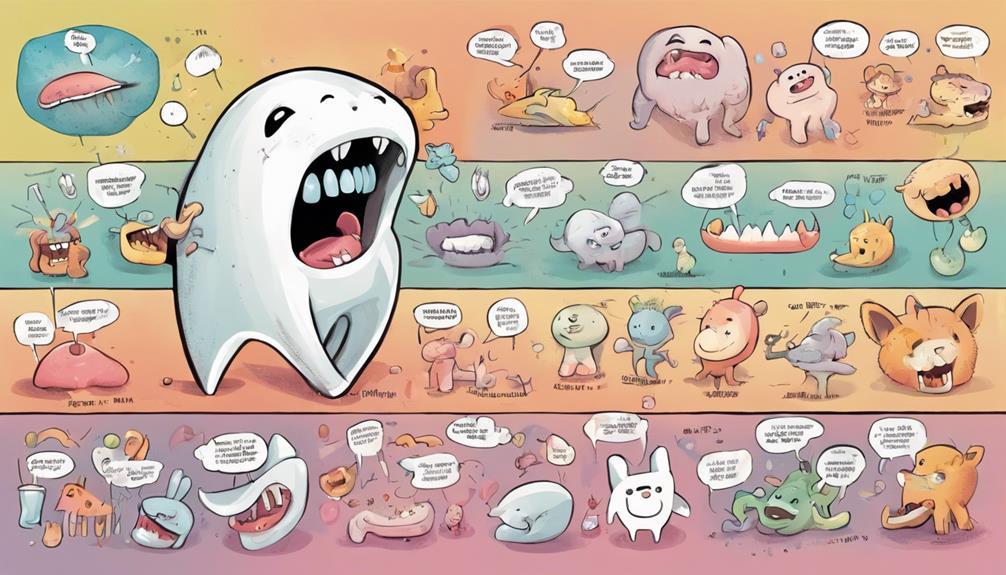Baby teeth, also known as primary teeth, start emerging between 4 to 12 months of age. You can usually find them tucked beneath your child's gums, waiting to erupt in a specific order. By age 3, kids typically have a full set of 20 baby teeth. These teeth are crucial for chewing, speech, and acting as placeholders for permanent teeth. It's important to care for them to prevent dental problems later on. If you're curious about how to maintain their health or the teething process, there's much more to explore.
Key Takeaways
- Baby teeth typically emerge between 4 to 12 months, starting with the lower central incisors.
- By age 3, most children have a complete set of 20 baby teeth.
- Baby teeth serve as placeholders for permanent teeth, ensuring proper alignment and spacing.
- Primary teeth usually begin to fall out around ages 6 to 7, following the order of their eruption.
Overview of Baby Teeth

Baby teeth, or primary teeth, play an essential role in your child's development by helping with chewing, speaking, and creating space for permanent teeth. These 20 baby teeth, also known as deciduous teeth, usually start to erupt between 4 to 12 months. The lower central incisors are typically the first to make their appearance, marking an exciting milestone for both you and your child. By age 3, most kids will have a complete set of 20 baby teeth—10 in the upper jaw and 10 in the lower jaw. While baby teeth are important for your child’s development, it is not uncommon for a newborn with teeth to cause concern for parents. However, this is a rare condition known as natal teeth, and it occurs in about 1 in every 2,000 to 3,000 births. Natal teeth may need to be monitored by a pediatric dentist to ensure they do not cause any issues with feeding or speech development. If necessary, the dentist can provide guidance on how to care for and manage these early teeth.
You can refer to a teeth eruption chart to track which teeth will emerge and when, giving you a clear idea of what to expect. Understanding the timeline can help you prepare for dental visits and address any concerns.
Teething Process Explained
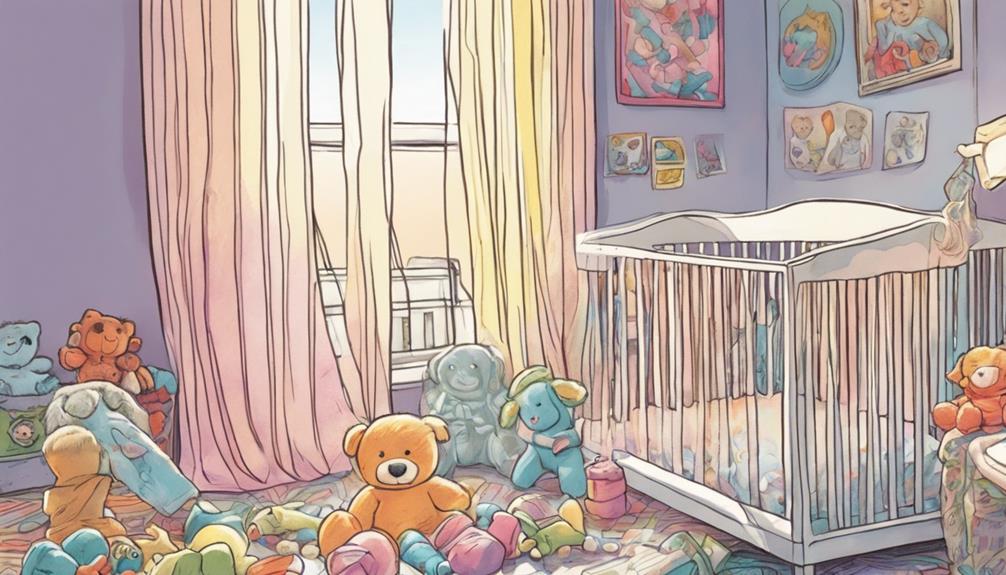
Have you ever wondered what happens during the teething process as your child's teeth begin to emerge? The teething process typically kicks off when your child's first teeth, usually the lower central incisors, erupt between 4 to 12 months.
As those primary teeth begin to break through the gums, you might notice signs of teething pain, including increased drooling, fussiness, and a strong desire to chew on objects. These symptoms generally last about 48 hours for each tooth eruption.
The order of tooth emergence usually follows a pattern: first, the central incisors, then the lateral incisors, followed by the first molars, canines, and finally the second molars. By the age of three, most children will have a complete set of 20 primary teeth, essential for speech development and proper nutrition.
To help ease your child's teething pain, you can try massaging their gums or using chilled teething rings. Just remember to avoid unsafe products like amber necklaces.
Understanding the teething process can make this challenging phase a bit easier for both you and your little one.
Importance of Baby Teeth
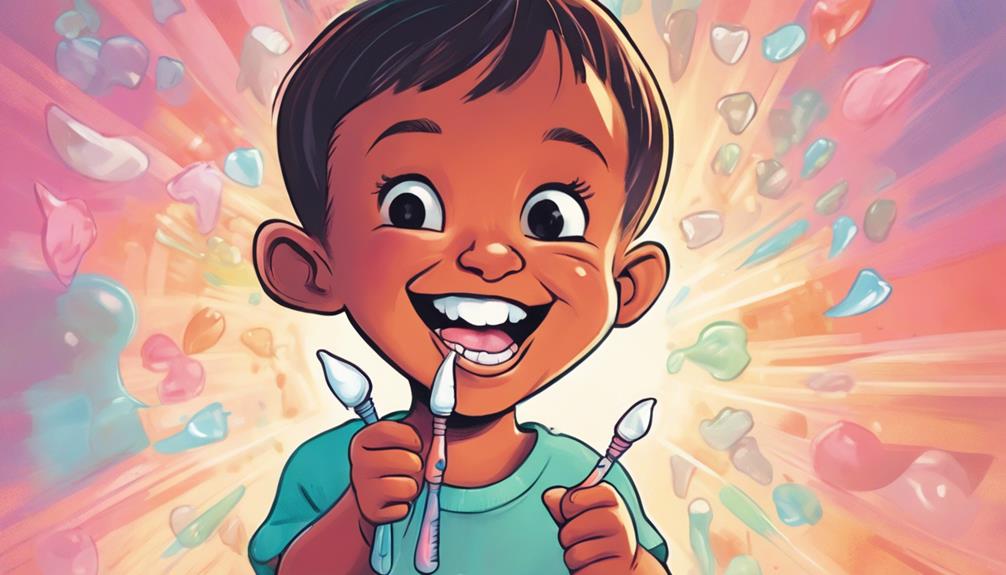
Understanding the importance of baby teeth is essential for your child's development.
Not only do they help with speech formation, but they also act as placeholders for permanent teeth, ensuring they come in properly aligned.
Caring for these early teeth sets the stage for a healthy smile in the future.
Role in Speech Development
Primary teeth play an essential role in developing clear speech by providing the necessary structure for articulating sounds effectively. As your child's baby teeth emerge, they're not just cute additions to their smile; they're fundamental for proper speech development. The presence of these primary teeth supports your child's ability to pronounce words correctly, enhancing their communication skills.
Here are three key ways baby teeth contribute to speech development:
- Articulation Support: Baby teeth aid in positioning the tongue and lips, allowing your child to form sounds accurately.
- Milestone Alignment: The eruption of primary teeth often coincides with significant speech milestones, encouraging your child to experiment with new sounds and words.
- Preventing Difficulties: Missing baby teeth can impede your child's ability to create certain sounds, potentially leading to speech challenges.
Maintaining the health and alignment of baby teeth is essential for fostering normal speech patterns. As these primary teeth pave the way for future permanent teeth, they play an indispensable role in your child's journey toward clear and confident speech.
Placeholders for Permanent Teeth
Baby teeth act as essential placeholders for permanent teeth, guaranteeing there's enough space and proper alignment for them to erupt correctly. You mightn't realize it, but those 20 baby teeth, or primary teeth, play a significant role in your child's dental development. With 10 in the upper jaw and 10 in the lower jaw, these primary teeth maintain the necessary spacing for adult teeth that will come in later.
When baby teeth are lost too early, it can lead to significant alignment issues and spacing problems for the permanent teeth. This misalignment often results in the need for orthodontic treatment down the line. By retaining their baby teeth until they naturally fall out, children can help confirm their permanent teeth come in straight and properly positioned.
Additionally, baby teeth aren't just placeholders; they also support your child's overall oral health and development. They help with chewing, speech, and even the development of facial muscles.
Caring for Baby Teeth

Caring for your baby's teeth starts earlier than you might think.
By establishing a daily oral hygiene routine, you can set the foundation for a lifetime of healthy smiles.
Regular check-ups and proper cleaning of those tiny teeth are essential to prevent decay and guarantee proper spacing for permanent teeth.
Importance of Early Care
Why is early care for your child's teeth so important? Caring for your baby's teeth sets the stage for a lifetime of good oral health. Establishing proper habits early on can prevent dental issues down the road. Here are three key reasons to prioritize that first dental visit and care routine:
- Foundation for Permanent Teeth: Baby teeth act as placeholders for adult teeth. If they're neglected, it can lead to alignment issues when the permanent teeth emerge.
- Speech Development: Healthy baby teeth are essential for your child's ability to chew and speak clearly. Missing or decayed teeth can hinder their speech development.
- Good Oral Hygiene Habits: Starting a daily brushing routine with fluoride toothpaste as soon as the first tooth erupts helps your child develop lifelong oral hygiene practices.
Daily Oral Hygiene Practices
Establishing a daily oral hygiene routine is vital for keeping your child's teeth healthy from the moment they erupt. Even before those first teeth appear, start by gently wiping your baby's gums with a soft cloth or clean fingers. This helps to establish good oral hygiene habits early on.
Once the first tooth breaks through, brush it twice daily with plain water. Continue this routine until your child is 18 months old, at which point you can introduce fluoride toothpaste. Use only a smear for infants and a pea-sized amount for children over 3 years old. This promotes dental health while minimizing the risk of overconsumption.
It's important to avoid giving your baby a bottle at bedtime, as this can lead to tooth decay from sugary liquids. To guarantee your child brushes effectively, supervise and assist them until they're around 7 or 8 years old. This guidance ensures they use proper technique and thoroughly clean their teeth.
Common Teething Symptoms
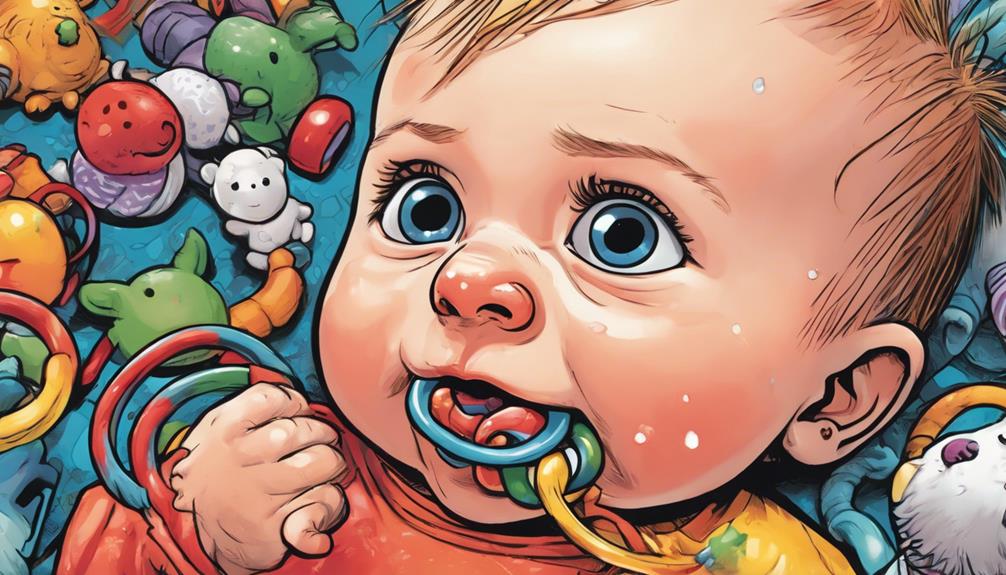
Teething can be a challenging time for both you and your baby, as you'll notice several common symptoms that indicate those little teeth are on their way. These signs of discomfort can vary, but three of the most noticeable symptoms include:
- Increased drooling: You'll see your baby drool more than usual, often starting around 3 months as the first teeth begin to emerge.
- Fussiness and irritability: Your little one may become more fussy, typically for about 48 hours during each tooth's eruption.
- Swollen and tender gums: You might notice your baby's gums looking red and swollen as the teeth push through.
While a low-grade fever can sometimes accompany teething, remember that a true fever usually signals another illness.
To help ease your baby's discomfort, consider using teething gels to soothe their tender gums. Just keep an eye on them, and be prepared for lots of chewing and mouthing behaviors as they seek relief.
Timeline of Tooth Eruption
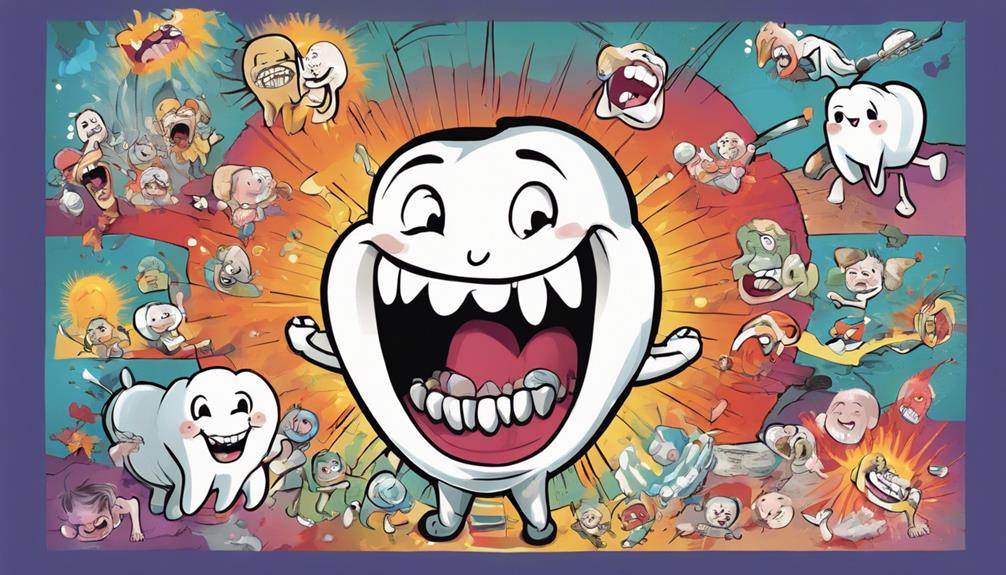
Understanding the timeline of tooth eruption can help you track your baby's dental milestones and guarantee they receive the necessary care as their teeth develop.
Typically, your baby's first tooth will begin to erupt between 4 to 12 months of age, with the lower central incisors usually coming in first. This initial eruption marks an exciting milestone for both you and your little one.
As your child grows, you can expect a complete set of 20 primary teeth by the age of 3. The order of eruption generally follows a pattern: first, the lower central incisors, then the upper central incisors, followed by the lateral incisors, first molars, canines, and finally, the second molars.
Keeping track of these timelines can help you monitor your child's dental health. Regular dental check-ups become essential as your baby enters the teething phase.
Baby Teeth Loss

Around ages 6 to 7, your child's baby teeth start to fall out, making way for their permanent teeth. This process can be both exciting and a little nerve-wracking for you and your child. You might notice the first baby teeth to go are usually the lower central incisors, followed closely by the upper central incisors.
Here's what you can expect during this change:
- First Molars: These often come in around age 6 and are typically the last baby teeth to be lost, followed by the canines and second molars.
- Order of Loss: Children usually lose their primary teeth in the same sequence they erupted, which helps you track the process.
- Timing Variability: Each child is unique; some might start losing teeth as early as 4 years old while others could take until 8 years old.
Permanent Teeth Development
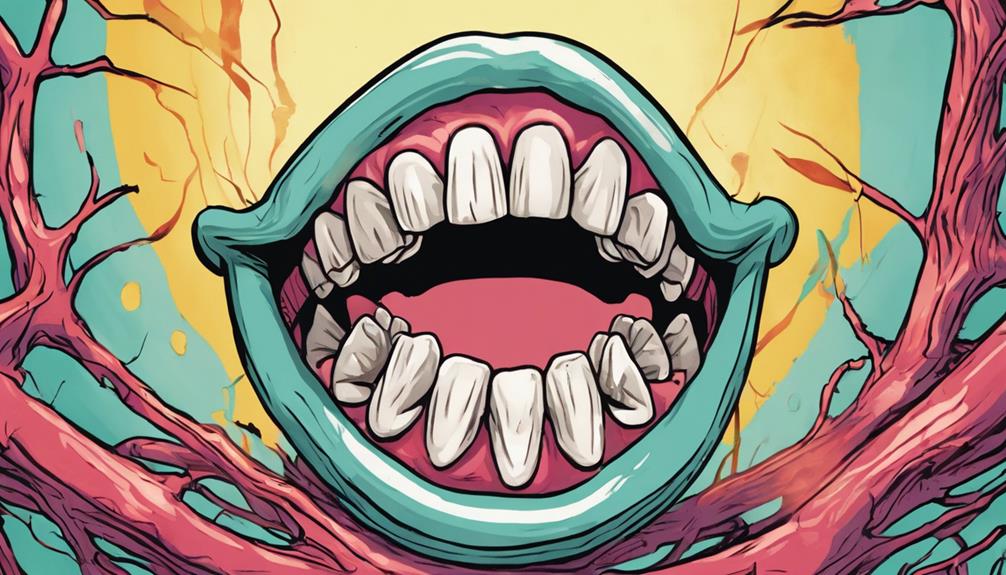
Permanent teeth begin to emerge as early as age 6, marking an important milestone in your child's dental development. During this time, the first permanent teeth, typically the central incisors and first molars, make their appearance. You'll notice that the loss of primary teeth often happens in the same order they came in, starting with the lower central incisors around ages 6 to 7.
As your child grows, permanent teeth continue to erupt in a specific sequence. Lateral incisors usually follow between ages 7 and 8, while canines and premolars come in between ages 9 and 13. Second molars appear around ages 11 to 13, and finally, the third molars, or wisdom teeth, typically emerge between ages 17 and 21.
It's essential to remember that these permanent teeth replace primary teeth, playing a significant role in functions like chewing and speaking. Proper care for these permanent teeth is necessary for long-term dental health.
Encouraging good dental habits from an early age will help guarantee your child maintains a healthy smile as they shift from primary to permanent teeth.
Dental Care Resources
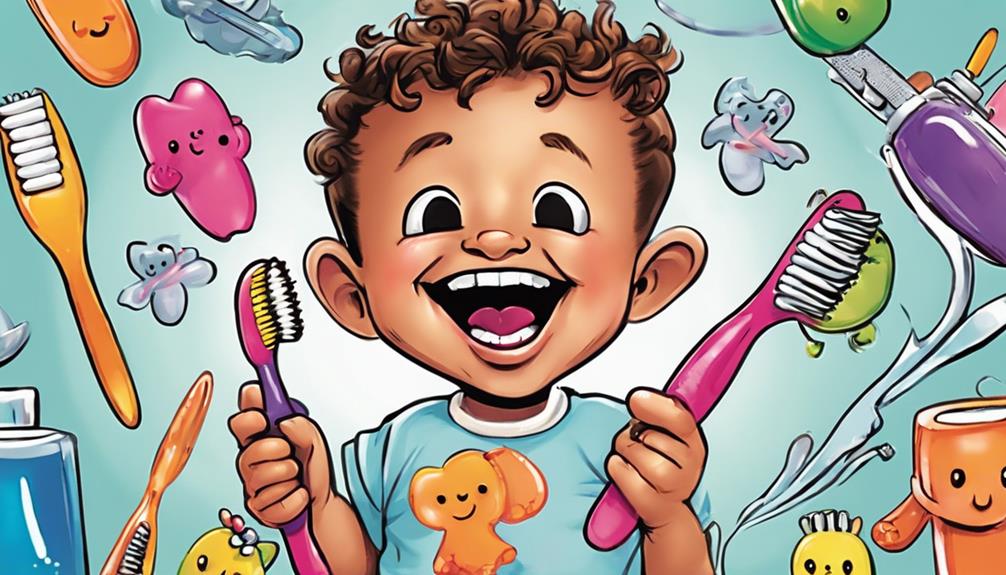
As your child's permanent teeth develop, it's vital to have access to reliable dental care resources to support their oral health journey. Regular dental check-ups are important for tracking their dental health and ensuring proper development.
Here are three valuable resources you can utilize:
- Australian Dental Association: This organization provides a wealth of information on finding local dentists and understanding the importance of preventive care for your child's teeth.
- Dental Health Services Victoria: They offer public dental services, including preventive care and educational resources tailored for parents and children. It's a great way to stay informed about your child's oral health needs.
- Maternal and Child Health Line: Available 24/7, this hotline offers guidance on dental health and care for your child. Whenever you have questions or concerns, you can get expert advice.
Additionally, services like NURSE-ON-CALL give you access to health information around the clock, ensuring you're never left in the dark about your child's dental health.
Make use of these resources to keep your child's smile bright and healthy!
Myths About Baby Teeth
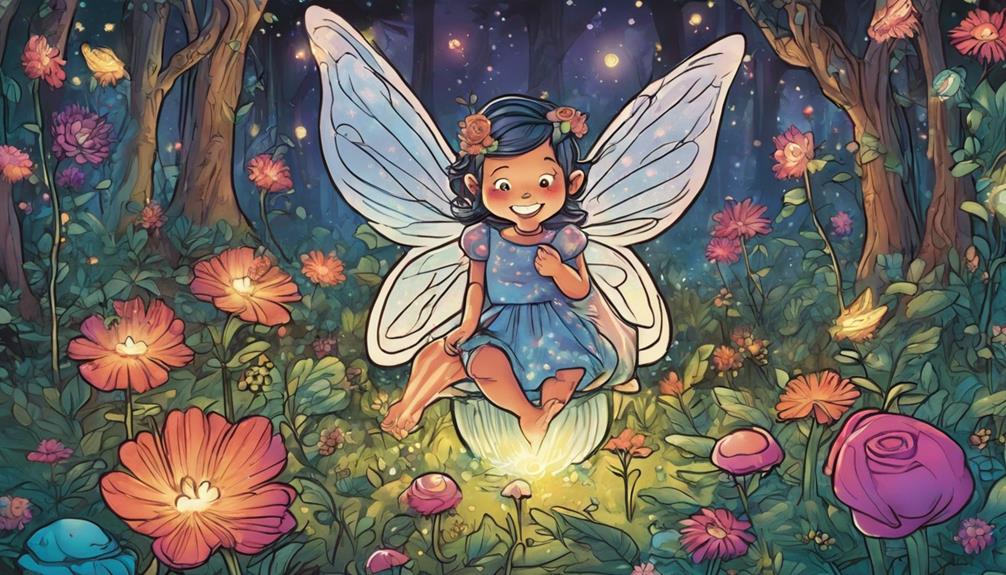
Many parents underestimate the importance of baby teeth, believing they don't need much care since they'll eventually fall out. However, these primary teeth play a fundamental role in your child's speech development and serve as placeholders for permanent teeth. Neglecting your baby's teeth can lead to cavities and alignment issues that affect their adult teeth. It's important to prioritize dental care from the moment the first tooth erupts.
Another common myth is that teething causes high fevers. While it's true that teething can make your child a bit irritable and lead to a low-grade fever, a true fever usually indicates illness, not teething.
Additionally, you might think that all children lose their baby teeth at the same age, but the reality is that this can vary greatly. Most kids lose their first teeth between the ages of 6 and 7.
Lastly, some parents assume that baby teeth are too small to require fluoride. In fact, fluoride is crucial for strengthening the enamel of your baby's teeth and preventing decay. Starting fluoride as soon as the first tooth erupts can set your child up for a lifetime of healthy smiles.
Frequently Asked Questions
Where Are Baby's First Teeth?
You might notice your baby's first teeth starting to come in between 4 to 12 months. Typically, the lower central incisors appear first, followed by others as your child grows and develops.
How Do I Find My Baby's Teeth?
Did you know most kids have 20 baby teeth by age 3? To find your baby's teeth, gently feel their gums for hard bumps, and watch for teething signs like drooling and irritability.
Which Teeth in Your Mouth Are Baby Teeth?
In your mouth, baby teeth consist of 20 primary teeth: four central incisors, four lateral incisors, four canines, and eight molars. They typically emerge between 6 months and 3 years of age.
Which Teeth Are Baby Teeth and Fall Out?
Did you know that children typically lose 20 baby teeth by age 12? These teeth include the central incisors, lateral incisors, canines, and molars, all of which fall out to make way for permanent teeth.
What Age Do Baby Teeth Typically Fall Out?
Baby teeth typically fall out between the ages of 6 and 12, making way for permanent teeth to come in. This natural process can sometimes be aided by a comprehensive teeth ripping tool, such as a dentist-recommended toothbrush or dental floss, to ensure a smooth and painless transition for the child.
Conclusion
In the grand garden of your child's mouth, baby teeth bloom like delicate flowers before giving way to strong, sturdy trees.
These fleeting blossoms, though temporary, play an essential role in shaping the landscape of their smile.
By nurturing these tiny wonders, you're ensuring a vibrant future for their permanent teeth, just as a gardener tends to each sprout with care.
So, embrace the journey of baby teeth—they're the stepping stones to a healthy, radiant smile.



